Gainesville, FL Pollen and Allergy Report for Summer 2023
Pollen Allergy Trends in Gainesville, FL
When is pollen lowest in Gainesville, FL?

May
Lowest month total PPM
Avg. PPM
When is pollen highest in Gainesville, FL?

April
Highest month total PPM
Avg. PPM
How does pollen in Gainesville, FL compare to Florida?
Gainesville has a lower average PPM than the state of Florida.
Gainesville yearly avg PPM:
Florida yearly avg PPM:
How does pollen in Gainesville, FL compare to the USA?
Gainesville has a lower average PPM than the USA.
Gainesville yearly avg PPM:
USA yearly avg PPM:
Is pollen worse this year in Gainesville, FL?
Spring 2023 was better than spring 2022.
Spring 2023 PPM:
Spring 2022 PPM:
Average PPM in Gainesville, FL
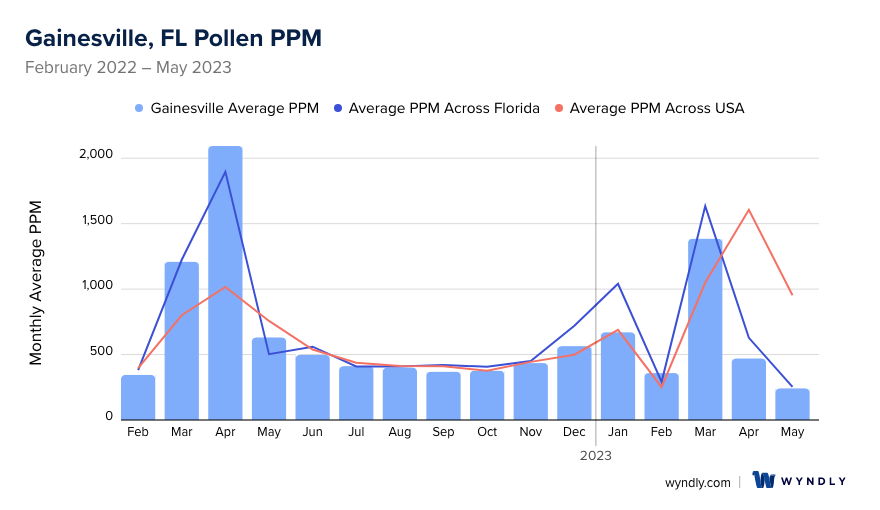
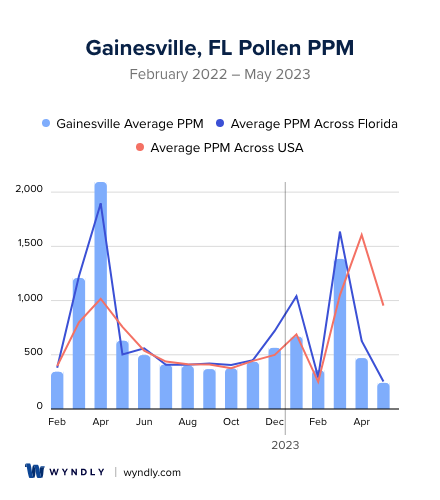
Gainesville, FL Pollen and Allergy Breakdown by Month
Grass
When is grass pollen highest in Gainesville, FL?
April has the highest grass pollen in Gainesville, FL with an average PPM of
When is grass pollen lowest in Gainesville, FL?
December has the lowest grass pollen in Gainesville, FL with an average PPM of
Tree
When is tree pollen highest in Gainesville, FL?
March has the highest tree pollen in Gainesville, FL with an average PPM of
When is tree pollen lowest in Gainesville, FL?
September has the lowest tree pollen in Gainesville, FL with an average PPM of
Weed
When is weed pollen highest in Gainesville, FL?
April has the highest weed pollen in Gainesville, FL with an average PPM of
When is weed pollen lowest in Gainesville, FL?
February has the lowest weed pollen in Gainesville, FL with an average PPM of
Gainesville, FL Pollen Monthly Breakdown by Pollen Type
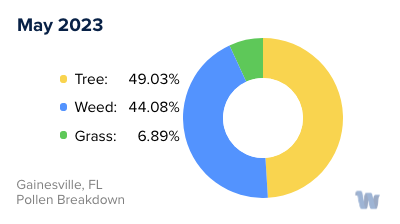
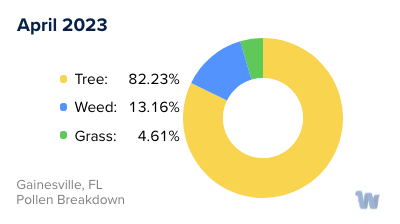
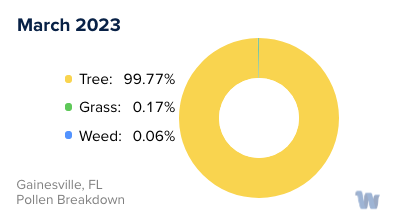
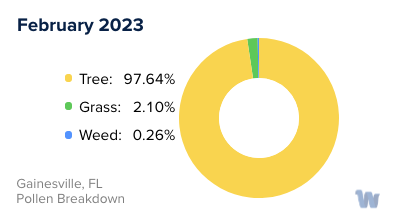
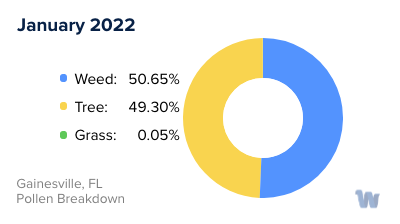
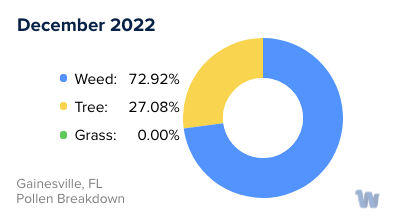
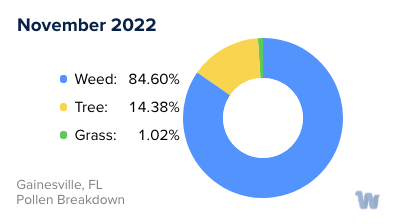
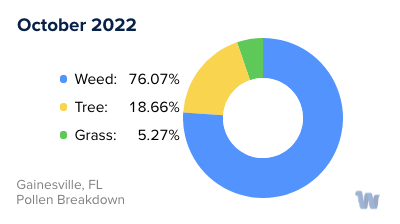
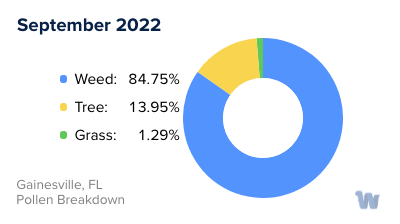
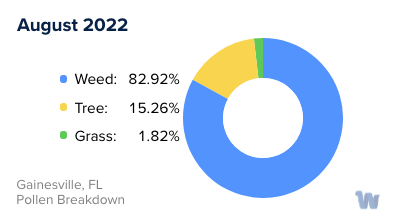
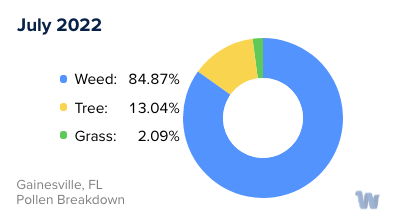
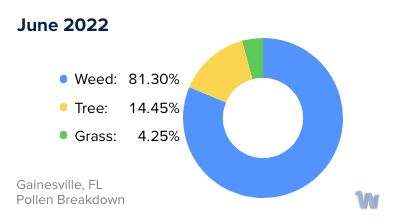
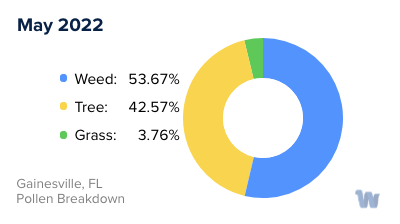
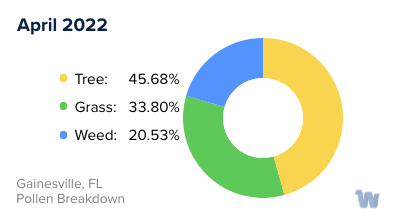
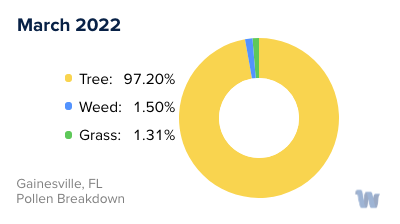
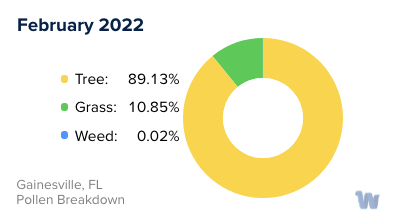
Pollen and Hay Fever in Gainesville, FL
Gainesville, Florida, known for its lush landscape and vibrant biodiversity, is a beautiful place to live. However, this natural diversity, while a visual treat, can also trigger pollen allergies for many residents. Pollen allergies, also known as hay fever, can make certain times of the year challenging for those affected by this condition.
In Gainesville, there are three main types of pollen to be aware of: tree pollen, grass pollen, and weed pollen. Each has its own unique season, making it crucial for residents to understand these patterns to better manage their allergies.
Tree pollen is the first to make its appearance every year, usually in the late winter and early spring. Oaks, pines, and cedar trees are common in Gainesville, and their pollen can cause allergic reactions. When these trees begin to bloom, their microscopic pollen grains are carried by the wind, making their way into the noses and throats of allergy sufferers.
As spring transitions into summer, grass pollen begins to dominate the air. Grasses such as Bermuda grass, Bahia grass, and Timothy grass release pollen that can trigger allergic reactions. This type of pollen is most prevalent in late spring and early summer, just when the tree pollen season starts to decline.
Lastly, weed pollen becomes more common in late summer and fall. Common culprits in Gainesville include ragweed, sagebrush, and pigweed. These plants release tiny pollen grains into the air, contributing to the 'hay fever' symptoms experienced by many individuals.
While each type of pollen has a peak season, it's important to remember that weather conditions can greatly influence these patterns. Rain can wash pollen away, while warm, windy days can cause pollen counts to soar. Understanding these cycles can help Gainesville residents anticipate and prepare for pollen allergy season, even though it might add a bit of a challenge to enjoying the natural beauty of the area.


